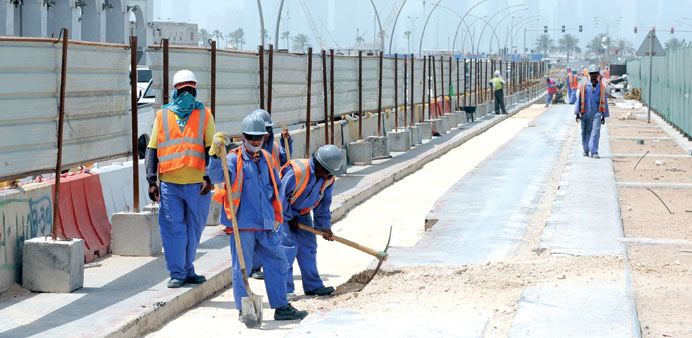Qatar’s oil economy is expected to grow by just 0.4% this year before shrinking by 1.1% in 2014 as the country’s LNG expansion programme has come to a halt, Meed said in its Middle East Economic Review 2013.
The main driver of Qatar’s economic growth in the coming years will be the non-hydrocarbons sector. Quoting the International Monetary Fund, Meed said the country’s non-oil GDP growth would be 9% this year and 9.5% in 2014.
The construction sector will account for most of Qatar’s non-oil growth, the report said. The country has an “immense pipeline” of infrastructure projects estimated to be worth $183bn that it has committed to deliver ahead of the FIFA World Cup, which the country will stage in 2022.
The largest of these is the Doha Metro Scheme. The network will cover a distance of about 216km and will have some 100 stations. Good progress is already being made on the project with QRail awarding design and construction contracts totalling $5.4bn in May.
A light rail system is also planned to link the new Hamad International Airport with central Doha and the various stadiums that are being built to host the World Cup.
“Executing all the planned schemes will require huge amounts of materials and manpower. The concern is that this could lead to rapid cost inflation and an overheating economy as 2022 draws nearer. Consumer price inflation in Qatar has been less than 2% for the past two years, but economists are forecasting an increase to 3% this year and 4% in 2014,” the Meed report said.
For now though, overall, Qatar’s economy is in a strong position. The banking and finance sector is performing above expectations and recording healthy profits. The rate of non-performing loans in the Qatari banking sector at about 2% of total loans is also the “lowest in the region,” Meed said.
The country’s stock exchange received a boost in June when index compiler MSCI announced that it would be upgrading Qatar from a frontier to emerging market next year.
In order to reduce the dependence on hydrocarbon exports, QP is now turning its attention away from oil and gas production to develop downstream projects.
For example, the company is planning two major petrochemical developments at Ras Laffan, with a combined budget of $14bn.
“The schemes will add about 6mn tonnes per year of new production capacity to the current output of 9mn tonnes per year,” Meed said.

